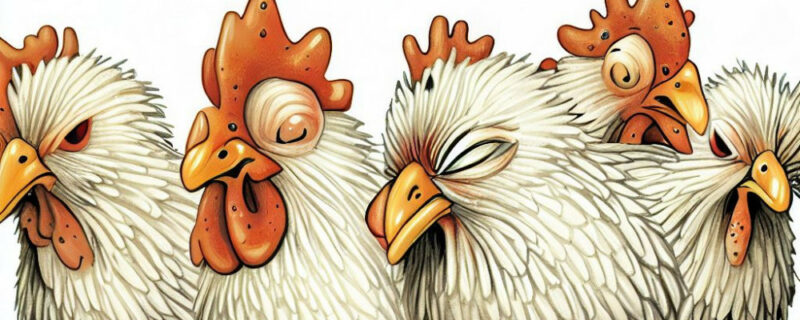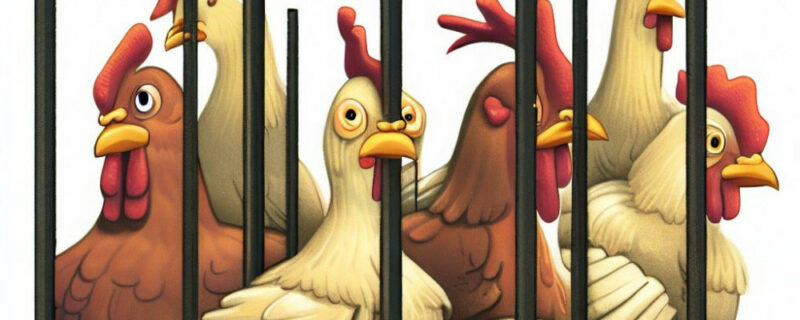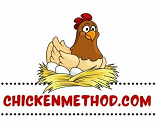
When it comes to achieving a peaceful life for your poultry, some hidden threats are always present to disrupt it. One of the major disturbances known is the Avian Flu. Avian flu in chickens is always ready to take hold of a chicken or two and, from there, can spread at an alarming rate.
Now the question is, what exactly is this Avian Flu, what is the reason for its occurrence, and how can you treat and prevent it in the future? So, let’s get into these queries one by one and enlighten ourselves about it in the best way.
What Is Avian Flu In Chickens?
Avian flu, also known as Bird Flu, is an infectious viral disease that has had a major effect on poultry animals, including Chickens. This disease drastically minimizes egg production in the chickens and causes respiratory problems.
Cause of Avian Flu
Influenza A virus is the holder for causing Avian Flu in chickens. Influenza A virus and its subtypes can occur in its high or low pathogenicity (ability to affect) states. This virus mainly affects poultry animals and rarely humans.
How Avian Flu Develops in Chicken
Without getting into the deep scientific details, the poultry Caretaker should still know how exactly Avian flu develops in chickens and how can you know whether apparent symptoms are of Avian Flu or not;
-
Encountering Virus
The Avian flu virus can reach chickens through contact with infected wild birds, feeders, or chickens.
-
Virus Attachment
Once your chickens have been exposed to the virus through the above-mentioned means, the virus attaches itself to chicken cells through receptors mainly on the Respiratory or digestive tract.
-
Entry & Multiplication
The virus then enters the cells and starts multiplying itself.
-
Spreading Infection
Through virus multiplication, it starts affecting the respiratory and digestive tract of the chicken and causes infections in these areas.
Encountering Virus → Virus Attachment → Virus Entry → Virus Multiplication → Spreading Infection
Avian Flu Symptoms
Once the infection has been spread, the following symptoms appear:
Decreased Egg Production
One of the major issues encountered in Avian Flu-affected chickens is the less egg production. Due to respiratory and digestive system distress, damaged reproductive system, hormonal imbalance, and less feed intake, your chicken cannot lay eggs like a healthy chicken.
Swollen Eyes, Head, and Neck
Chicken respiratory system issues cause swollen eyes and head, while the swollen neck is due to lymphoid tissue enlargement. These respiratory and lymphoid problems are caused by Avian Flu, thus leading to such swollen symptoms.
Coughing, Sneezing, or Gasping
If your chickens show symptoms like difficulty breathing or unusual coughing or sneezing, then your chickens are likely to suffer from Avian Flu. These are the major symptoms you can see in your chickens if they suffer from bird flu.
Let’s also look at other related symptoms:
- Diarrhea
- Watery Greenish Droppings
- Less feed intake
- Lethargy
- Head tremors
- Neck twisting
- Increase in sudden death rate within your chickens.
Transmission of Avian Flu
Avian Flu can spread through a couple of means, including physical contact. Let’s look at them closely;
Direct Contact with infected Chicken
Your chickens can be most susceptible to infection if they come in direct contact with chickens carrying the Avian Flu virus, Influenza A. It could occur during transportation when an infected chicken is aboard with the rest of the assembly.
Contaminated Materials and Equipment
Viruses are pretty stout when it comes to surviving outside the substrate. They can even survive for quite some time on many surfaces. If the infected wild bird or chicken happens to pass by, it leaves its feces there either on the surface or on equipment. Then, the virus can transfer itself to the new chicken when it comes in contact with it.
Transmission through Air
Avian Flu virus can easily transfer through air from one place to another. If other chickens inhale the virus, they will likely be diseased with Avian flu and soon show symptoms.
Transmission through Water
Besides air, the Avian Virus can also implement its effect on other chickens through water. If the healthy chicken drinks water from the same source from where the contaminated chickens have drank, then high chances are there for the healthy chicken to become infected.
Treatment and Prevention of Avian Flu
When treating Avian flu in chickens, the pathogenicity effect is measured. Often, the low pathogenicity virus that infected chickens can be curable. However, with a high pathogenicity state of the virus, prevention and control measures are taken to keep the other chickens safe.
- Low-Pathogenicity Avian Flu infected Chicken: If your infected Chicken has a low pathogenicity state Virus, then it can be treated using broad-spectrum antimicrobials and increasing the temperature of the place where the infected chicken resides to stop the virus multiplication and to reduce its effect.
- High-Pathogenicity Avian Flu Infected Chicken: If your infected chicken has high pathogenicity Avian Virus, then, currently, there is no cure for it, and culling is probably the best path to take.
Here are the respective preventive measures you must take to control the viral transmission;
Disinfecting Farm Material, Equipment, and Staff Clothes and Boots
The avian virus can survive on surfaces like farm materials, equipment, and even on the caretaker staff’s clothes and boots if they have come close to the infected chicken or their feces. Disinfecting will help reduce the chances of virus transmission from one place to another and will keep the health of your chickens intact. For viral removal disinfectants, using Iodine and Formalin are good options.

Separate Avian-Flu Infected Chickens
If the laboratory test confirms that the tested chicken has the Avian virus, then quickly separate the infected chicken from the other healthy ones. Also, separate the food materials and equipment. Furthermore, the caretaker staff, if they are close to the infected chickens, must disinfect their clothes to reduce the transmission of the virus.
Another thing you can do is quarantine the infected chickens;
- If the infected chickens have low-pathogenicity Avian Virus, they can be treated to some extent but must be kept separately.
- Culling is necessary if the infected chicken has a high-pathogenic Avian Virus.
Prohibit the Transportation of Infected Chickens
If a chicken is suspected of having the Avian-Flu virus, you must avoid transporting even healthy chickens to other farms. There are chances that some of them could be infected by the Avian-Flu virus and are in their early stages where it isn’t easy to diagnose. Farm quarantine would be the most suitable option to avoid spreading the disease.
Conclusion
All in all, avian flu is an insidious enemy of chickens, and not only does it affect the chickens alone, but it has drastic effects on the poultry population and the poultry industry’s economic outcome. Besides treatment, prevention and control is the best way to avoid such calamity. Monitor your chicken’s health from time to time, and in case of any suspicions, take preventive measures.
Thanks for reading. I’d appreciate any comments you have. Just drop them below. I’ll get back to you ASAP.
Dave
Chickenmethod.com
